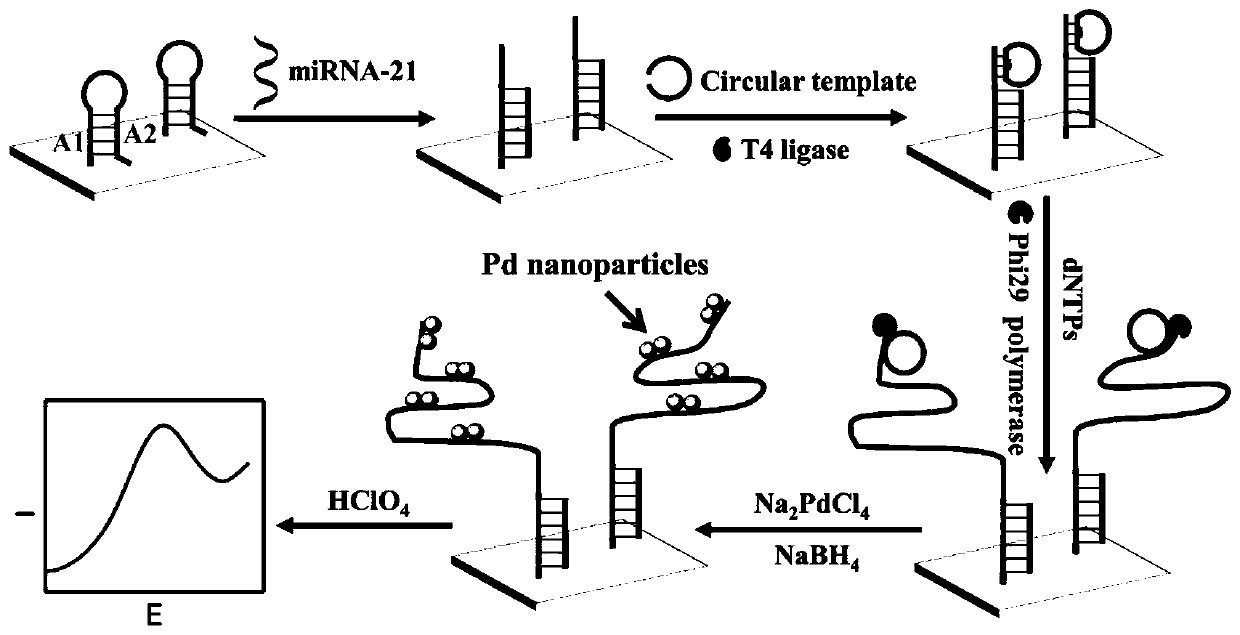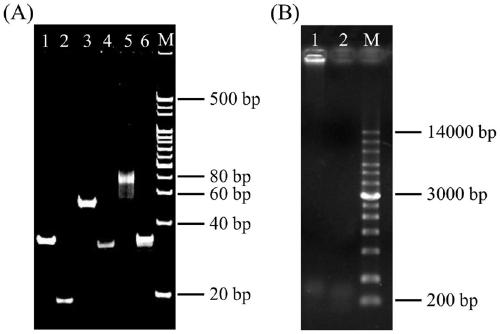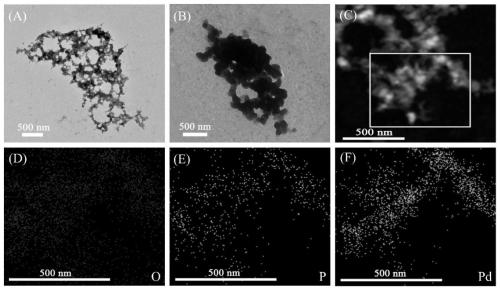Electrochemical detection method for microRNAs based on rolling circle amplification mediated palladium nano-particles
A technology of palladium nanoparticles and rolling circle amplification, applied in the field of electrochemical detection of microRNA by palladium nanoparticles, can solve the problems of process redundancy, time-consuming, inconvenient operation, etc., achieve good selectivity, high sensitivity, improve transmission The effect of sensibility
- Summary
- Abstract
- Description
- Claims
- Application Information
AI Technical Summary
Problems solved by technology
Method used
Image
Examples
Embodiment
[0064] Reagents and materials
[0065] HPLC-purified DNA and miRNA (shown in Table 1) were purchased from Shanghai Sangon Biotechnology Co., Ltd., China. Phi29 DNA polymerase, T4 DNA ligase, diethyl pyrocarbonate (DEPC), tris-hydrochloric acid (Tris-HCl), ethylenediaminetetraacetic acid (EDTA), 4-(2-hydroxyethyl)piperene A solution of sodium oxazine-1-ethanesulfonate (HEPES) and a mixture of deoxyribonucleotide triphosphates (dNTPs) was purchased from Shanghai Sangon Biotechnology Co., Ltd., China. Sodium borohydride (NaBH 4 ), potassium ferricyanide (K 3 Fe(CN) 6 ) and potassium ferrocyanide (K 4 Fe(CN) 6 ) was purchased from Sinopharm Holding Chemical Reagent Co., Ltd. Sodium hypochloropalladate (Na 2 PdCl 4 ), 6-mercapto-1-hexanol (MCH) and tris(2-carboxyethyl) liquid phosphine hydrochloride (TCEP) were purchased from Aladdin, Shanghai, China. TE buffer (10 mM Tris-HCl, 100 mM NaCl, 1.0 mM EDTA, pH 8.0) was used to dilute the DNA. Tris buffer (40mM Tris-HCl, 10mM ...
PUM
 Login to View More
Login to View More Abstract
Description
Claims
Application Information
 Login to View More
Login to View More - R&D
- Intellectual Property
- Life Sciences
- Materials
- Tech Scout
- Unparalleled Data Quality
- Higher Quality Content
- 60% Fewer Hallucinations
Browse by: Latest US Patents, China's latest patents, Technical Efficacy Thesaurus, Application Domain, Technology Topic, Popular Technical Reports.
© 2025 PatSnap. All rights reserved.Legal|Privacy policy|Modern Slavery Act Transparency Statement|Sitemap|About US| Contact US: help@patsnap.com



